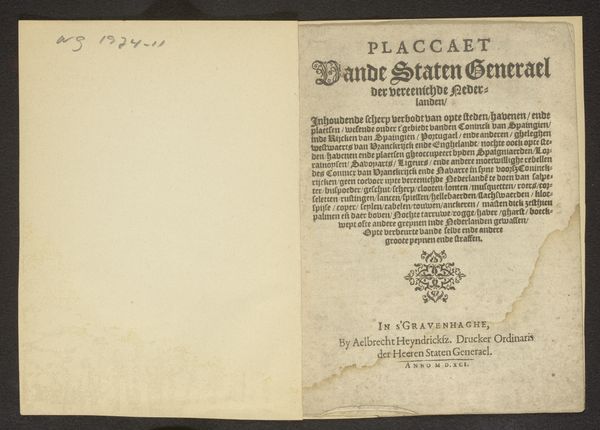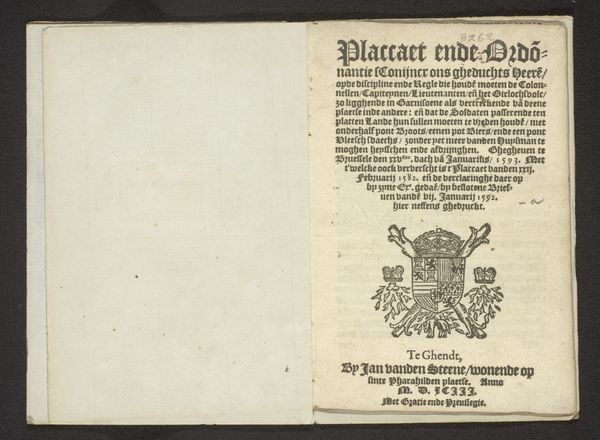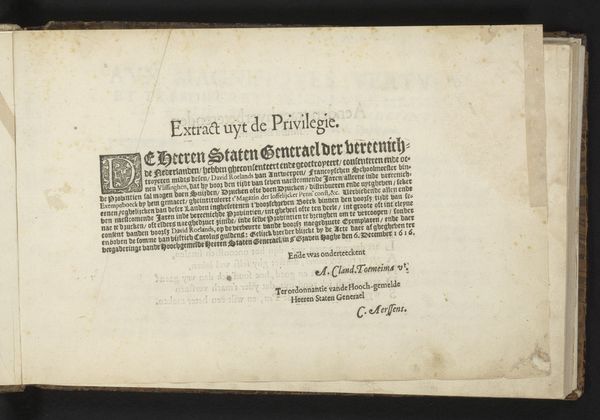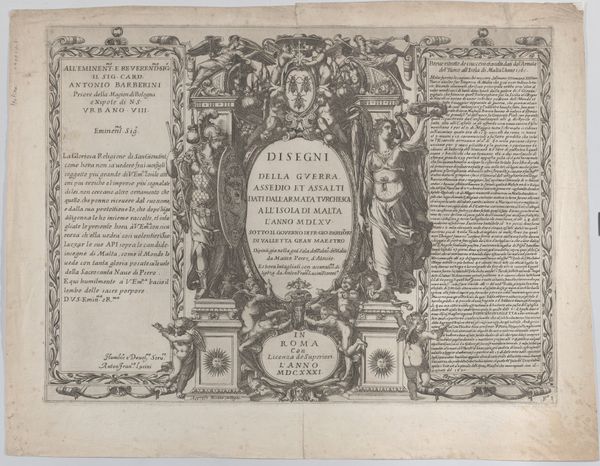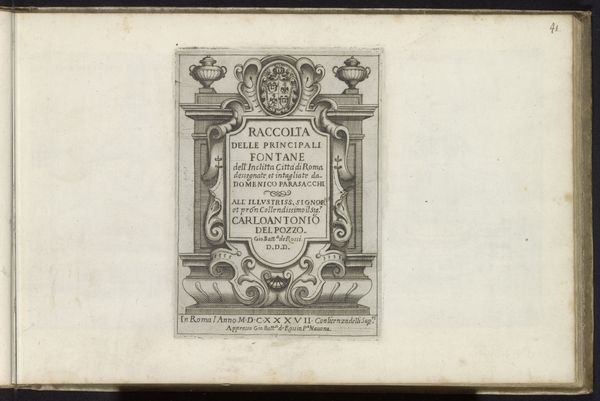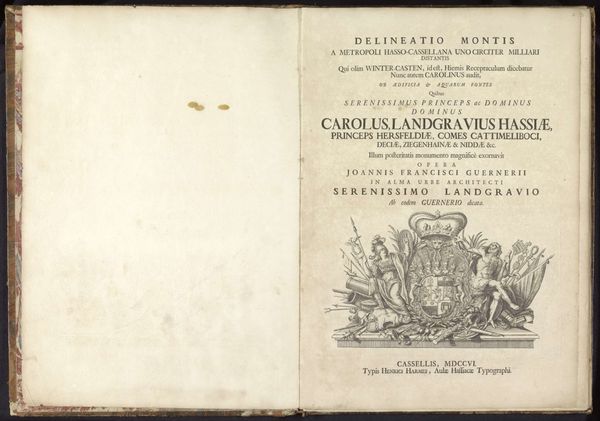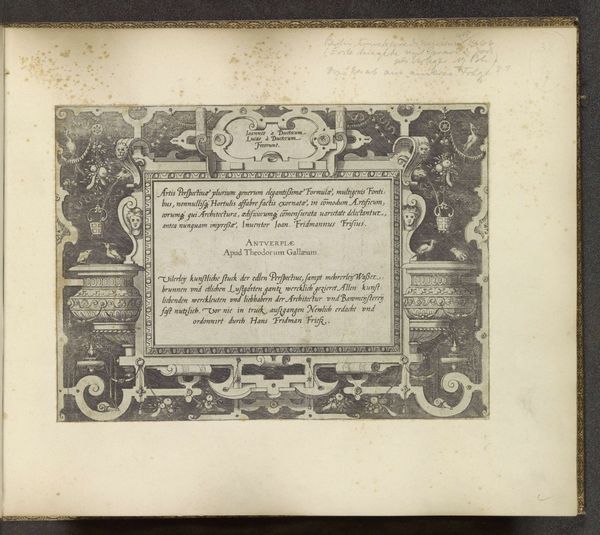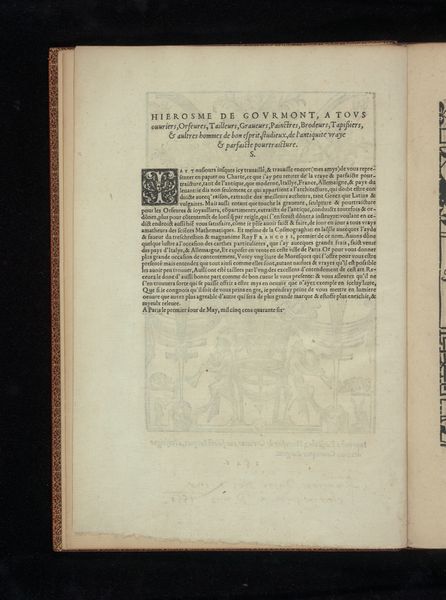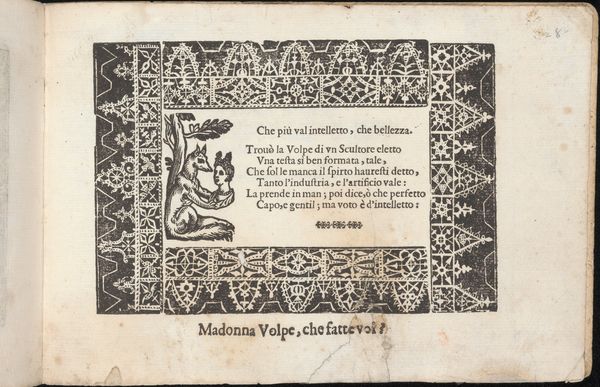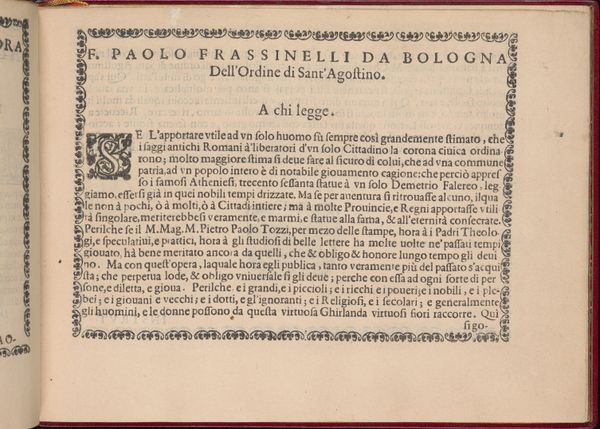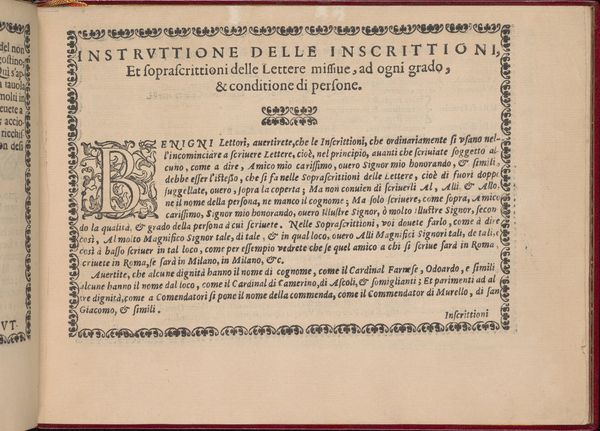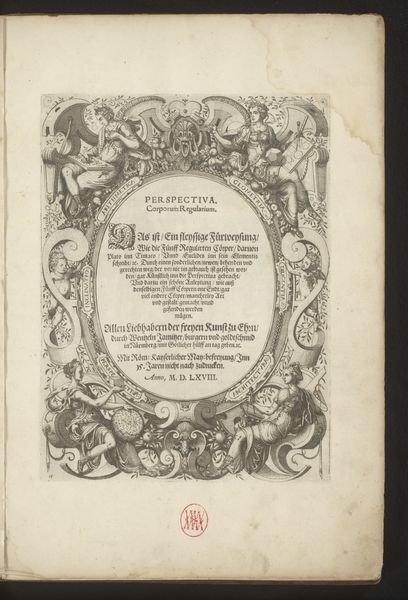
Placcaet ende Ordonnantie op de Monsteringhe, d'ordene Militaire, ende teghens d'overlasten byden Crijghsvolcke daghelicks gheschiedende Possibly 1587
0:00
0:00
graphic-art, print, textile, paper, typography, engraving
#
graphic-art
#
medieval
# print
#
textile
#
paper
#
typography
#
engraving
Dimensions: height 20 cm, width 15.7 cm
Copyright: Rijks Museum: Open Domain
Editor: This is "Placcaet ende Ordonnantie op de Monsteringhe…," likely from 1587, by Aelbrecht Hendricksz. It's an engraving printed on paper, with some textile involved, I see. It reminds me of a historical document, something quite functional, not necessarily 'art' as we think of it today. What do you see in it? Curator: Indeed, let's consider its function. This "Placcaet" – a public ordinance – tells us much about the material conditions of 16th-century society. It details military mustering, order, and responses to daily "overlasten" – or burdens - caused by soldiers. So, rather than viewing this as pure art, we might see it as a product, a piece of mass communication that served a specific regulatory function. What impact would inexpensive printing methods have on social control and order at the time? Editor: That's interesting. I hadn't considered it as a form of mass communication. So the choice of typography and layout served to distribute information more than aesthetic intentions? Curator: Exactly. Notice the robust, legible font. This isn’t about ornate calligraphy, but clear delivery of information to as many people as possible. Moreover, consider the economics: printed and distributed widely, such decrees reduced reliance on town criers, representing a cost-effective mode of governance. Where would you see evidence of social class and hierarchy? Editor: Maybe the coat-of-arms towards the middle? Also the listing of 'By Aelbrecht Hendricksz, Ordinatis ghefvvoren Drucker,' showing pride in this printer's workmanship and their recognition as appointed printer of the Dutch states. Curator: Precisely! The printer also had his social position on display and, therefore, had vested interests in preserving the social hierarchies reflected in this "Placcaet," using a craft they mastered to benefit from a social position! Editor: That's a great point. I will look at art through that lens now. Curator: Fantastic. We have examined art as not solely as the product of individual genius, but stemming from complex socio-economic relations in materiality.
Comments
No comments
Be the first to comment and join the conversation on the ultimate creative platform.
